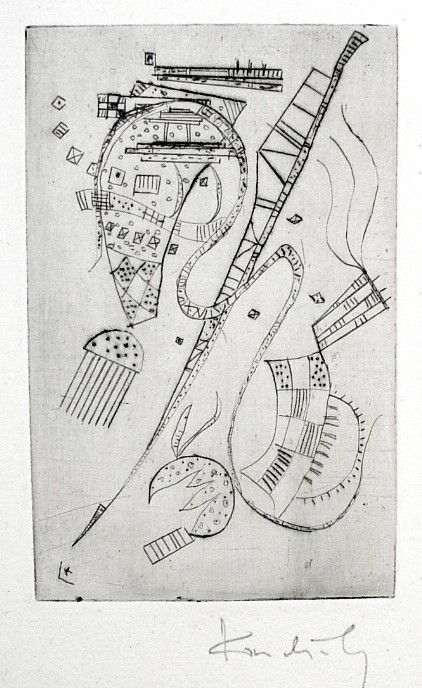Kandinsky The Artist
Kandinsky the artist (1866 – 1944) was a Russian painter and art theorist. Kandinsky is generally credited as one of the pioneers of abstraction in western art. Born in Moscow, he spent his childhood in Odessa, where he graduated at Grekov Odessa Art school. He enrolled at the University of Moscow, studying law and economics. Successful in his profession, Kandinsky began painting studies (life-drawing, sketching and anatomy) at the age of 30.

Kandinsky’s creation of abstract work followed a long period of development and maturation of intense thought based on his artistic experiences. He called this devotion to inner beauty, fervour of spirit, and spiritual desire inner necessity; it was a central aspect of his art. Some art historians suggest that Kandinsky’s passion for Abstract art began when one day, coming back home, he found one of his own paintings hanging upside down in his studio, and he stared at it for a while before realising it was his own work, suggesting him the potential power of abstraction.

In 1896, Kandinsky settled in Munich, studying first at Anton Ažbe’s private school and then at the Academy of Fine Arts. He returned to Moscow in 1914, after the outbreak of World War I. Following the Russian Revolution, Kandinsky “became an insider in the cultural administration of Anatoly Lunacharsky” and helped establish the Museum of the Culture of Painting. However, by then “his spiritual outlook… was foreign to the argumentative materialism of Soviet society”, and opportunities beckoned in Germany, to which he returned in 1920. There he taught at the Bauhaus school of art and architecture from 1922 until the Nazis closed it in 1933. He then moved to France, where he lived for the rest of his life, becoming a French citizen in 1939 and producing some of his most prominent art.
Click here to view prints by Kandinsky the artist.
